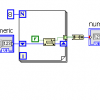-
Similar Content
-
- 0 replies
- 1,488 views
-
- 4 replies
- 2,599 views
-
- 6 replies
- 5,596 views
-
- 1 reply
- 3,049 views
-
USB 6215 - 10 Hz triggering with 2 TTL signals for 10 ms each.
By Peter Herrmann,
- usb 6215
- ttl trigger
- (and 1 more)
- 2 replies
- 2,775 views
-





Recommended Posts
Join the conversation
You can post now and register later. If you have an account, sign in now to post with your account.